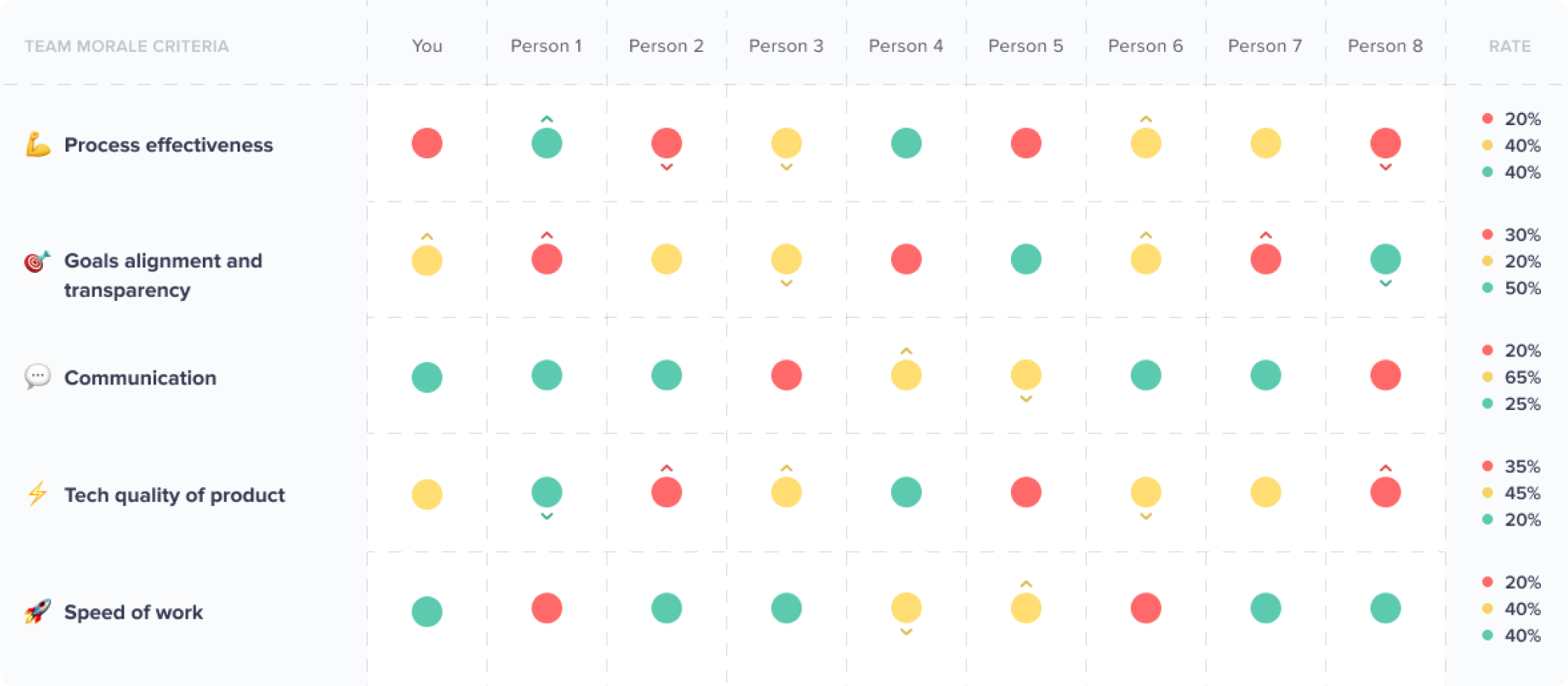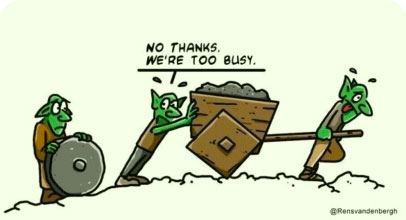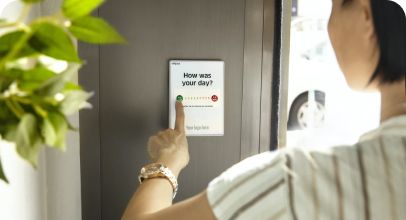
The fundamental unit of each project is a team of people. Their level of wellbeing, involvement, happiness, satisfaction and mood may have a greater impact on the project than we used to think. Happy team is more likely to deliver a successful product, meet deadlines and find better solutions in case of any issues. At the same time an unhappy team may unconsciously lead your project to failure.
But can we learn how happy the team is? You can’t make everybody happy with their work, but still you can figure out what each team member feels about the teamwork, state of the project and other important items.
The feelings are always subjective and hard to measure. But some companies already found the way and called it a health check model. The core idea is to let the team measure themselves on some key indicators and visualize the results. If you practice Scrum, you can use sprint retrospective as the best time to check your teams’ ‘temperature’.
How can we measure ‘happiness’?
It’s not as hard as you think. For example, you can ask each team member: What do you feel about our teamwork? Is it good, bad or ‘meh’? Did it get better or worse? Getting answers on such questions from your team members, you will be able to see both a ‘big picture’ of how they are feeling and more detailed areas that need improvements.
As you can see, for this technique it is very important to be sure that people are open to talk, do not hesitate to share their ideas, all team members understand that each opinion is subjective and the rates may vary. You can use some icebreakers before you start a team health check. In some cases it is still useful to anonymize teammates’ answers :)
How to use a team health check?
Choose 5-10 the most important items and track their rates dynamic from time to time. The number of the indicators should be minimized to keep the team’s focus. To be on the same page, discuss with the team what each indicator means and what should be included to the rating.
Agree what each rate is. For example, ‘green’ means that you are quite happy with the point and there is no need for any improvements for now. ‘Yellow’ means that there are some issues but you have some ideas how to improve it. ‘Red’ means that the state of this indicator is catastrophic and may affect the project success. Track the dynamic of the rates — does the rate get better or worse?
To see the whole picture, visualize the results. You can use cards, stickers or online tools like Timbo. After you come up with the agreements, you can start the check and then analyse the results.

When you are checking the results, you can see what the exact indicators that need more attention and how each team member feels the state of it. It will also help you to evaluate the transparency in your work — are you team members on the same page?
If you see mostly green rates, this means that your team is going well and feels quite happy. But if there are lots of yellow and red rates, you should be alarmed and immediately start finding the ways for improvements.
They say you can’t improve what you don’t measure. With team health check you already have the measurements, so to come up with the improvements will be an easy thing.
Valentina Petrashkevich
Project Manager at IT Band Systems
KMP I IQBBA Certified
Timbo: designed by Scrum Masters for Scrum Masters
 Valentina Petrashkevich
Valentina Petrashkevich























